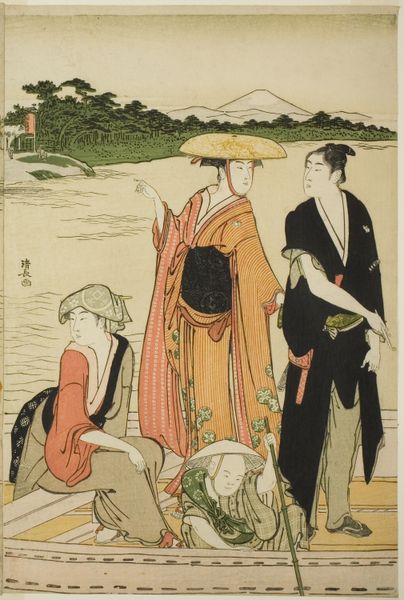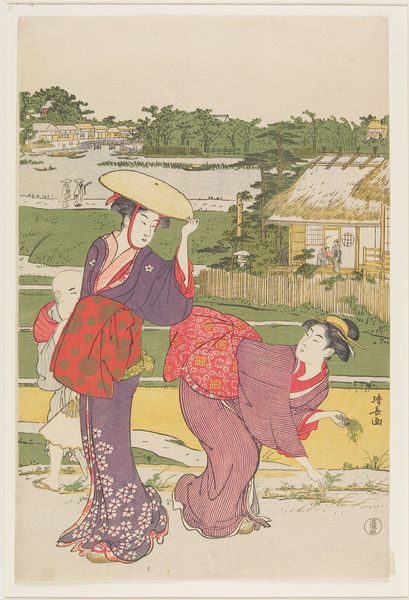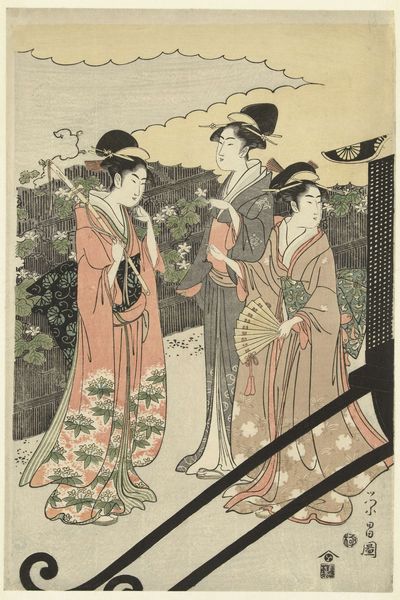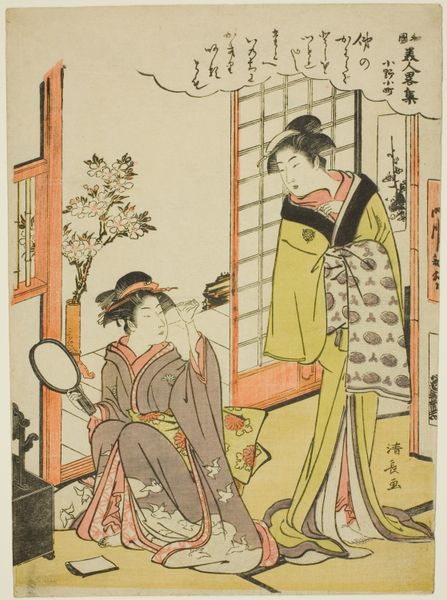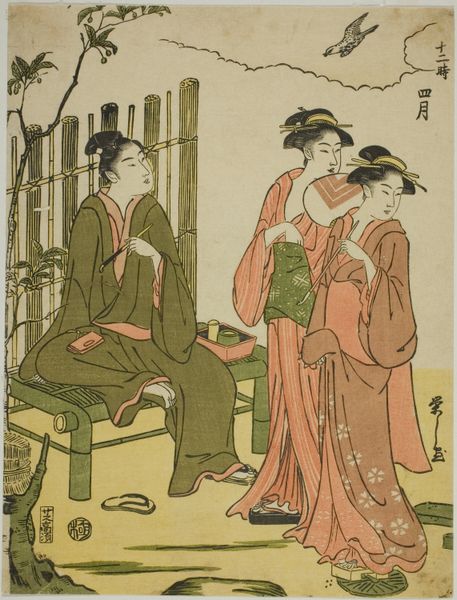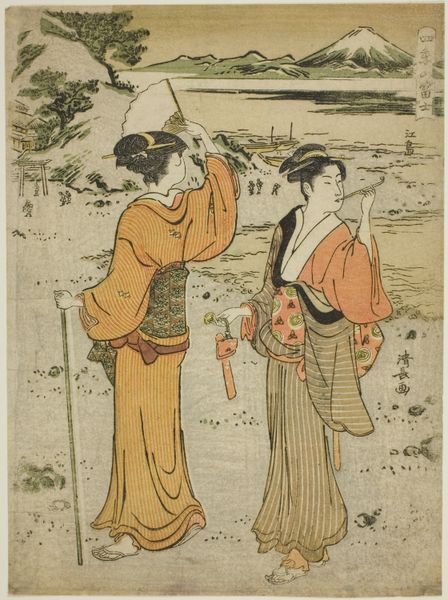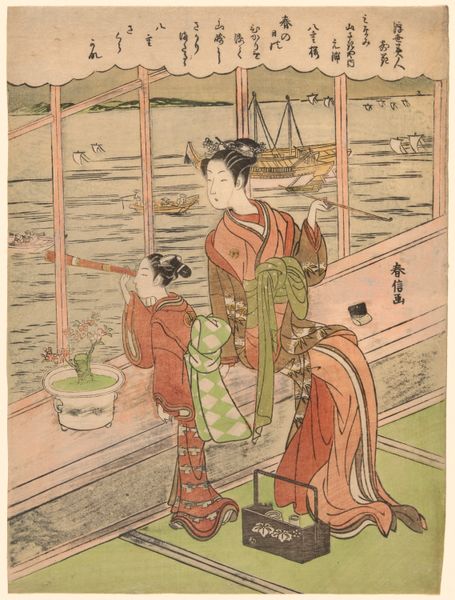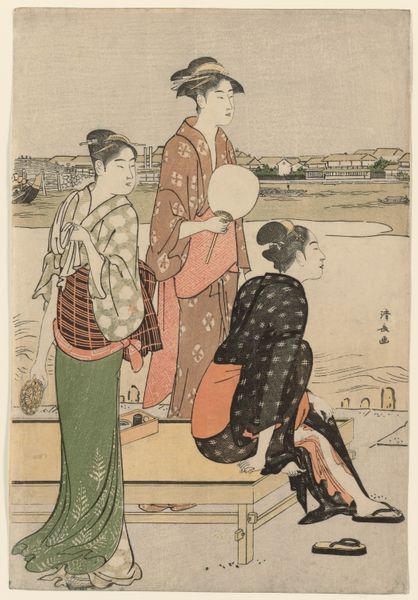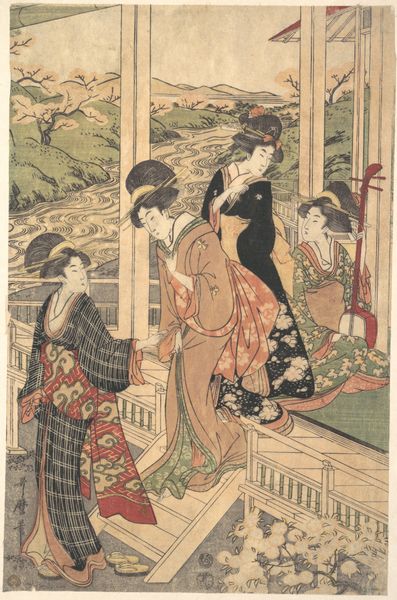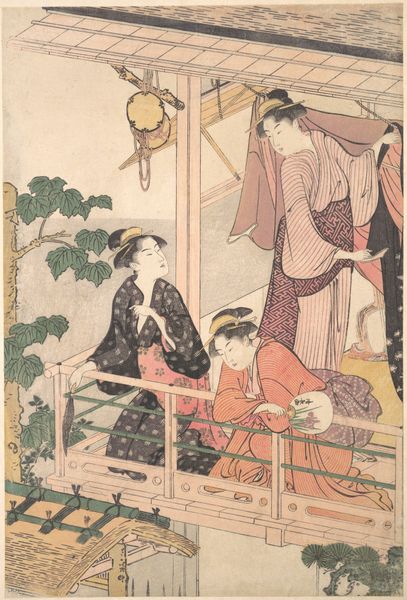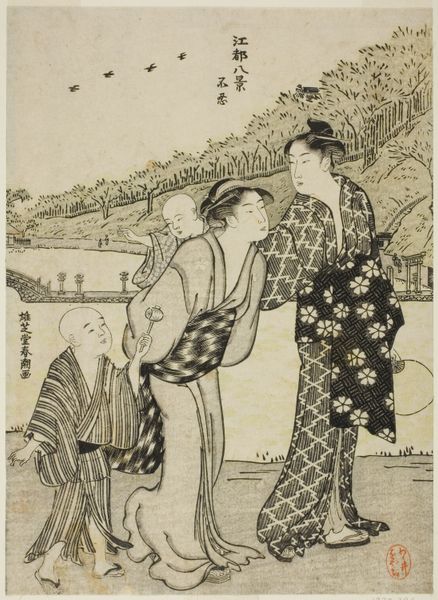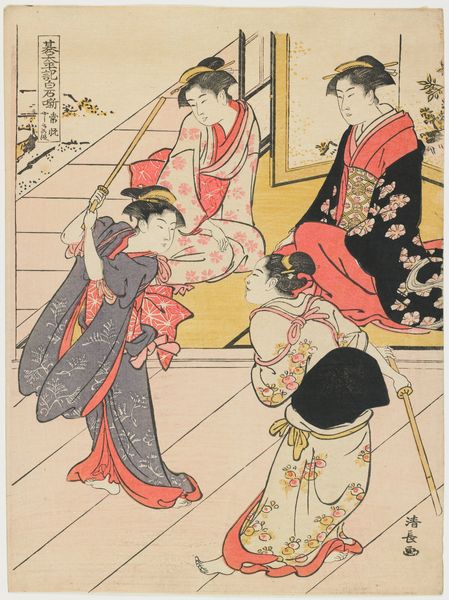
Group at a Tea-house on the Bank of the Sumida River 1780 - 1800
0:00
0:00
print, woodblock-print
#
portrait
# print
#
asian-art
#
river
#
ukiyo-e
#
figuration
#
woodblock-print
#
genre-painting
Dimensions: 15 1/4 x 10 1/4 in. (38.7 x 26 cm)
Copyright: Public Domain
Curator: What a lovely depiction of leisure! Chobunsai Eishi created this woodblock print, "Group at a Tea-house on the Bank of the Sumida River," sometime between 1780 and 1800. It gives us such a glimpse into Edo-period life. Editor: It feels so staged, doesn't it? The figures seem very deliberately posed, yet there's an incredible sense of immediacy, like catching a moment mid-conversation. What's fascinating is how class is being performed through gestures and the way the Kimono subtly denote hierarchies. Curator: Indeed. It’s a fantastic example of Ukiyo-e, floating world imagery. We can observe traditional societal structures represented through iconographic elements like the dress patterns, hairstyling, even the placement within the composition— all symbolic within Japanese culture. The artist carefully lays the groundwork of emotional expression through the actors and setting. Editor: And isn’t the Sumida River itself a potent symbol? A liminal space, literally a flowing border and social marker within Edo society that reveals much about spatial politics in shaping access and privilege. That river has long operated as both a route to transport goods as well as divide social standing. Curator: Yes! Rivers often operate as powerful signifiers. Here, in this work we can consider the cultural symbolism related to purity, flow, and change that is characteristic in depictions across various periods in art history. In Eishi's piece it is an aesthetic of transience that pervades both imagery and cultural ethos. Editor: These idealized scenes often served as subtle political commentaries, don't you think? The print medium made these commentaries more widely accessible, potentially subverting entrenched hegemonies by disseminating subversive thoughts through images. Curator: I think the idea of subversion, whether subtle or pronounced, adds an intriguing dimension. Even today, these echoes and symbolic cues give depth beyond the purely decorative—a testament to the layers of narrative woven into the floating world and to our reading of their purpose through contemporary frameworks. Editor: Looking at it this way, “floating world” feels like a pointed descriptor now: these are class fantasies rendered fleeting. But they left their mark—an incisive reflection for modern interpretations, still prompting conversations about visibility and agency. Curator: A perfect marriage of form, cultural representation, and an invitation for future discussion.
Comments
No comments
Be the first to comment and join the conversation on the ultimate creative platform.
